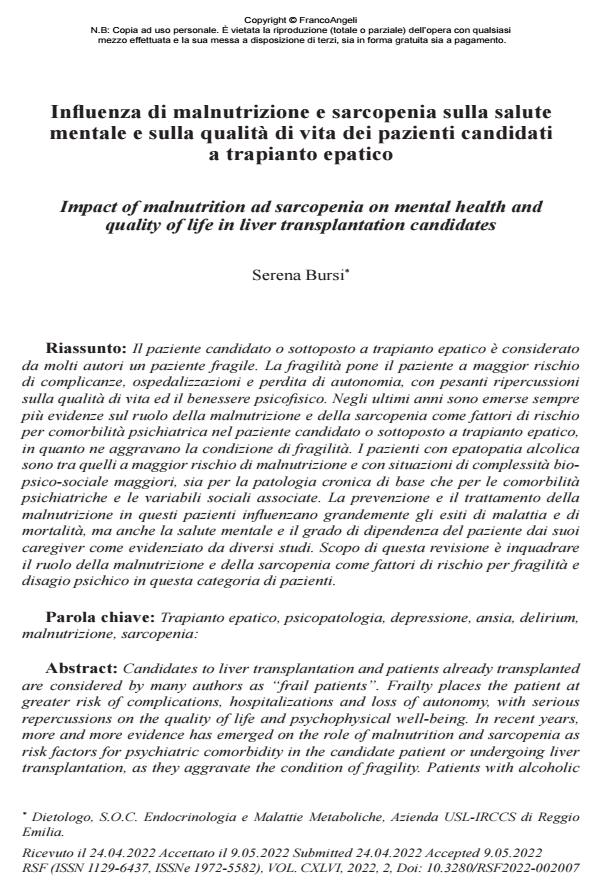Impact of malnutrition ad sarcopenia on mental health and quality of life in liver transplantation candidates
Journal title RIVISTA SPERIMENTALE DI FRENIATRIA
Author/s Serena Bursi
Publishing Year 2022 Issue 2022/2
Language Italian Pages 14 P. 95-108 File size 172 KB
DOI
DOI is like a bar code for intellectual property: to have more infomation
click here
Below, you can see the article first page
If you want to buy this article in PDF format, you can do it, following the instructions to buy download credits

FrancoAngeli is member of Publishers International Linking Association, Inc (PILA), a not-for-profit association which run the CrossRef service enabling links to and from online scholarly content.
Candidates to liver transplantation and patients already transplanted are considered by many authors as "frail patients". Frailty places the patient at greater risk of complications, hospitalizations and loss of autonomy, with serious repercussions on the quality of life and psychophysical well-being. In recent years, more and more evidence has emerged on the role of malnutrition and sarcopenia as risk factors for psychiatric comorbidity in the candidate patient or undergoing liver transplantation, as they aggravate the condition of fragility. Patients with alcoholic liver disease are among those at greatest risk of malnutrition and with situations of greater bio-psycho-social complexity, both for the underlying chronic disease and for psychiatric comorbidities and associated social variables. Prevention and treatment of malnutrition in these patients greatly impact on disease and mortality outcomes, but also on mental health and on the degree of dependence of the patient on his caregivers as evidenced by several studies. The purpose of this review is to frame the role of malnutrition and sarcopenia as risk factors for frailty and mental distress in this category of patients.
Keywords: Liver transplant, psychopathology, depression, anxiety, malnutrition, sarcopenia.
Serena Bursi, Influenza di malnutrizione e sarcopenia sulla salute mentale e sulla qualità di vita dei pazienti candidati a trapianto epatico in "RIVISTA SPERIMENTALE DI FRENIATRIA" 2/2022, pp 95-108, DOI: